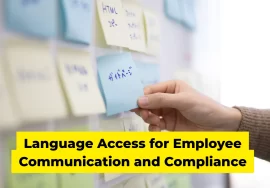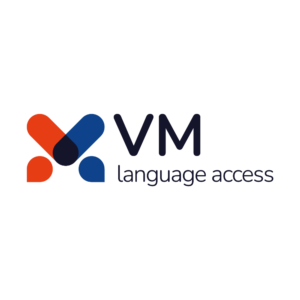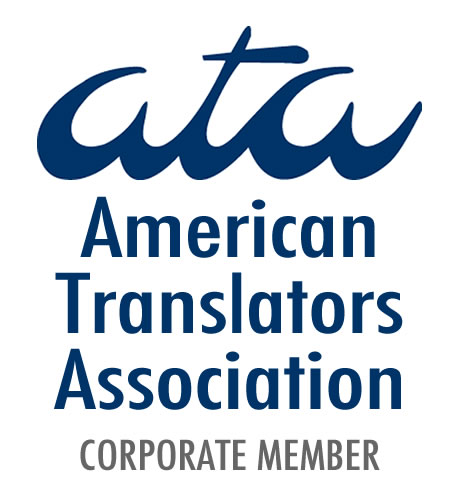
What to Include in an Interpreter Portfolio: A Practical Guide for Language Professionals
If you’re an interpreter—whether just starting out or already seasoned in the industry—chances are you’ve been told to “put together a portfolio.” But what does that actually mean in our line of work? Unlike photographers or graphic designers, interpreters don’t exactly have a collection of visual samples to present. So the question becomes: what to include in an interpreter portfolio to make it compelling, professional, and actually useful?
In this article, we’re breaking it all down. We’ll explore exactly what belongs in an interpreter portfolio, how to showcase interpretation skills effectively, and how to craft a portfolio that helps you land more opportunities. Whether you’re a freelance interpreter or part of an agency team, this guide is for you.
Why Interpreters Need Portfolios
Let’s get something straight: your interpreter portfolio is more than just a resume. It’s a curated snapshot of your language abilities, professional experience, and value as a communication bridge between cultures.
Clients, agencies, and potential employers often want more than a list of places you’ve worked. They want to understand how you operate, the types of environments you’re experienced in, and what makes you trustworthy in high-stakes communication.
In short, a portfolio is a way to say, “Here’s what I bring to the table—and why it matters.”
What to Include in an Interpreter Portfolio
So, let’s answer the big question: what to include in an interpreter portfolio? Here’s a breakdown of essential and optional elements.
1. Professional Bio
Start with a short, polished bio. This should include:
- Your language pairs (e.g., Spanish-English)
- Years of experience
- Primary fields (e.g., medical, legal, education, conference)
- A short sentence or two about your approach or philosophy
This section is a great place to showcase your personality and professional identity. Keep it human and relatable.
2. Certifications and Education
Interpretation is a high-trust profession. Certifications help demonstrate that you meet recognized standards.
Include:
- Court interpreter certification (state or federal)
- Medical interpreter certification (e.g., CMI, CHI)
- Academic degrees in linguistics, translation, or related fields
- Interpreter training programs you’ve completed
Attach scans or include links to digital certificates if you’re sending an online portfolio.
3. Relevant Work Experience
While your resume might list every job, your portfolio should zoom in on the most relevant assignments.
Describe:
- The context (e.g., court, hospital, IEP meetings)
- The challenge (e.g., high emotional stakes, technical language)
- Your role and how you handled it
- Outcome or feedback, if applicable
This not only shows experience but demonstrates how you handle real-world interpretation scenarios.
4. Client Testimonials or References
Social proof matters. If past clients or colleagues have praised your work, include those comments.
Make sure to:
- Get permission to use the quote
- Include the person’s name, role, and organization if possible
- Choose testimonials that reflect your professionalism, accuracy, and ethics
5. Specialized Glossaries or Notes
Want to impress a potential agency or client? Show them that you do your homework.
If you’ve created personal glossaries or reference sheets for your interpreting assignments (especially in legal or medical fields), include a sample or summary. This highlights your dedication and thoroughness—key traits of a great interpreter.
6. Professional Resume or CV
Your portfolio should include a clean, updated version of your CV. It should highlight:
- Language pairs and proficiencies
- Specializations
- Employment history
- Professional memberships (e.g., ATA, NAJIT, IMIA)
- Conferences or workshops attended
This supports everything else in your portfolio and gives a chronological view of your growth.
7. Video or Audio Samples (Optional but Powerful)
This is one of the most overlooked elements. Including a short video introduction or interpretation demo can be a game-changer—especially for remote interpreting roles.
Record yourself:
- Introducing your background and languages
- Performing a sample interpretation (with consent or using a fictional scenario)
This is a great way to demonstrate not just your voice, tone, and fluency, but also your calm and professional presence.
8. Letters of Recommendation
Whereas testimonials are often short quotes, letters of recommendation carry more detail and credibility.
Ask for letters from:
- Former supervisors
- Agency project managers
- Long-term clients
Make sure these letters emphasize your reliability, ethics, accuracy, and ability to handle pressure.
How to Showcase Interpretation Skills Effectively
Now that we’ve covered what to include in an interpreter portfolio, let’s shift gears. It’s one thing to list your experience. It’s another to demonstrate your skills.
So, how to showcase interpretation skills in a way that feels real, tangible, and persuasive?
Highlight Specific Scenarios
Instead of saying, “Experienced in medical interpretation,” say:
“Provided real-time interpretation for prenatal visits and surgical consultations, maintaining confidentiality and emotional sensitivity in high-stress environments.”
It shows what you’ve done and how you handle it.
Use Real-World Terminology
Avoid vague statements like “Excellent language skills.” Be specific:
- “Proficient in simultaneous interpretation for legal depositions”
- “Fluent in Spanish-English terminology for immigration and asylum cases”
This lets your potential client know you speak their language, not just the interpreted one.
Include Measurable Outcomes When Possible
Interpreting success is often hard to measure, but if you can mention things like:
- “Received consistently positive feedback from clients over 2+ years”
- “Trusted as lead interpreter for monthly board meetings with 100+ attendees”
…it strengthens your case dramatically.
Digital vs. Physical Portfolios
Most interpreters today go digital. A clean, easy-to-navigate PDF or personal website is often the best way to go.
If you’re going the digital route:
- Use hyperlinks for certifications and work samples
- Create a “Portfolio” tab on your LinkedIn or website
- Make sure your file is mobile-friendly
Still, some clients (especially in government or healthcare) might appreciate a well-printed copy, too.
Common Mistakes to Avoid
While you’re building or updating your interpreter portfolio, avoid these red flags:
- Too much irrelevant detail – Focus on interpretation, not unrelated jobs
- Spelling and grammar issues – Ironically, this still counts
- Sharing confidential material without consent – Never include names or documents from private cases
- Unprofessional formatting – Use clean, consistent design
Updating Your Portfolio: A Habit, Not a Project
Don’t wait for a slow season to update your portfolio. Add new work, certifications, or testimonials every few months. This keeps your material fresh and helps you track your own growth as a language professional.
Set a reminder on your calendar once a quarter: “Update Interpreter Portfolio.” Your future self will thank you.
A great interpreter portfolio isn’t just a collection of documents—it’s a reflection of your professionalism, expertise, and care in communication. When done right, it speaks louder than a resume ever could.
Whether you’re applying for new freelance projects, seeking agency partnerships, or pitching yourself to hospitals or school districts, your portfolio is a tool that tells your story and builds trust.
So now that you know what to include in an interpreter portfolio and how to showcase interpretation skills, the next step is simple: start building—or refining—yours today.
And if you ever need support, feedback, or services to help bridge those communication gaps, VM Language Access is here to help.











